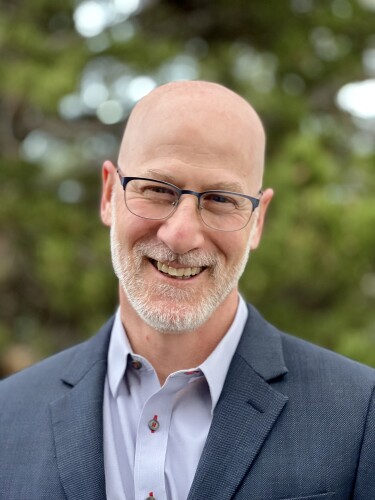After spinning out of BridgeBio in May 2024, BBOT had an eye on another round of fundraising in 2025. A SPAC quickly emerged as the best option.
BBOT—known legally as BridgeBio Oncology Therapeutics—has barely been an independent company for a year and has already made the jump to the public markets via a special purpose acquisition company deal. Too soon, you might be wondering? Only if you don’t realize that CEO Eli Wallace and his team have been working away at BBOT for years.
The company’s origins go back to 2019, when Wallace was recruited to run the oncology research unit of BridgeBio by that company’s CEO Neil Kumar and University of California, San Francisco Professor Frank McCormick, a leader in RAS-mutated cancer. While Wallace reported to Kumar, he operated the unit as a “semi-autonomous biotech.”
Meanwhile, BridgeBio was doing its own thing, moving acoramidis (now approved as Attruby) toward regulatory approval and running other late-stage programs. Finally, the executives decided it was time for BBOT to launch from the nest to allow BridgeBio to focus its resources on commercialization efforts and the non-cancer assets.
To do so, BBOT needed some new investors that were more focused on oncology to effectively support the unit’s pipeline. The companies split in May 2024, with BridgeBio remaining as a major stakeholder and Kumar and McCormick as members of the board. BBOT wasofficially born.
The split allowed BBOT to raise $200 million in capital to support the clinical programs.
“It wasn’t like we were really a series A–type company,” Wallace said of the fundraising. Having existed for four years prior to the spinout, “we were a much more mature biotech.”
What followed was a summer of execution. Initial patients were dosed in June 2024 in the Phase I ONKORAS-101 trial that is testing BBO-8520 KRASG12C non-small cell lung cancer. Then, in October, patients received doses in the Phase I BREAKER-101 trial testing BBO-10203 in solid tumors.
Wallace said BBOT always had plans to raise more capital in 2025 and had been keeping an open mind as to what form that took. He said the company considered a traditional crossover round or a regular IPO. But then Cormorant Asset Management’s Bihua Chen, who had been involved in the spinout, came forward with an idea: a SPAC. Cormorant was sponsoring Helix Acquisition Corp. II, the second blank check company of the Helix family after the successful launch of MoonLake Immunotherapeutics.
“It just became a very attractive way to get the capital that we needed,” Wallace said.
The deal was announced in February, with proceeds expected to be $450 million after Helix’s trust holdings and a private investment in public equity (PIPE) financing. Over the next six months, the deal churned through the regulatory process and Wallace said BBOT was insulated from the market volatility happening around it with a guaranteed valuation.
“With everything that happened probably starting in March in the public market, I think in retrospect, it was absolutely the right decision,” Wallace said of the SPAC.
On August 11, the de-SPAC was officially complete. BBOT began trading the next day. The team will ring the bell at Nasdaq next month. Cormorant’s Chen has even joined BBOT’s board, which is not typical after a de-SPAC. That made the SPAC path all the more clear for BBOT, Wallace said.
“We can’t do the control experiment to see if IPO would have been better for us. Maybe those strengths of the company would have carried us through,” Wallace said. “I guess we’ll never know.”
With the process complete, Wallace and the team head back to a place they know: executing on the clinical program. The company’s three clinical programs have readouts spaced out over the next 9 to 18 months.
“This capital gives us the ability to be data driven and to move all three towards proof of concept and then really make a data-driven decision on the best path forward. It could be all three. It could be two. We’ll just have to see how it plays out,” Wallace said. “I feel very fortunate. I have a very strong team and a very strong set of investors, and so we’ll just keep doing what we do.”







